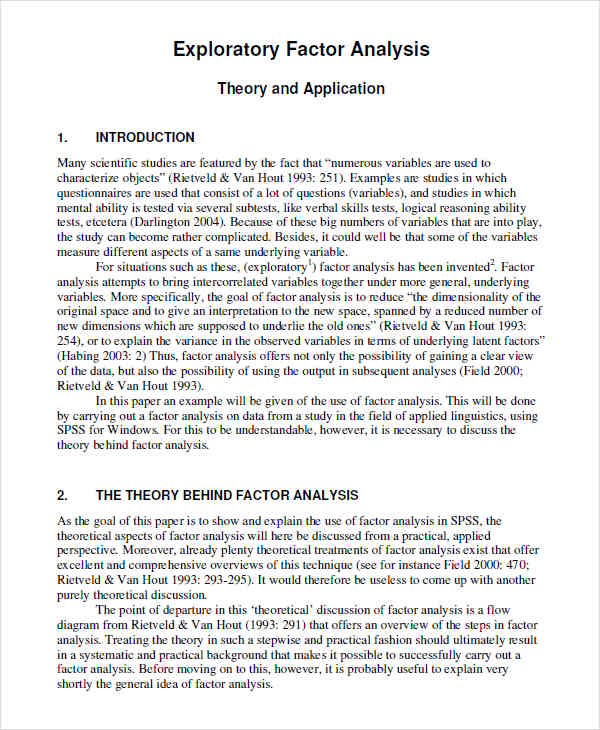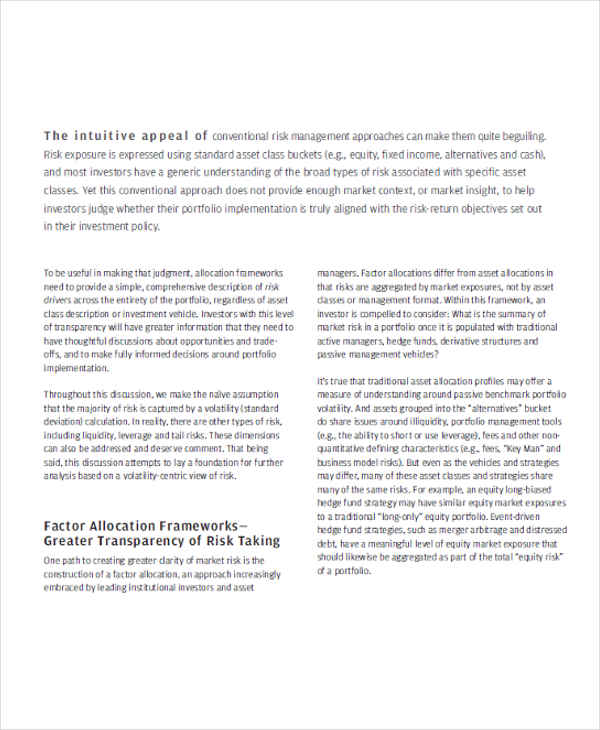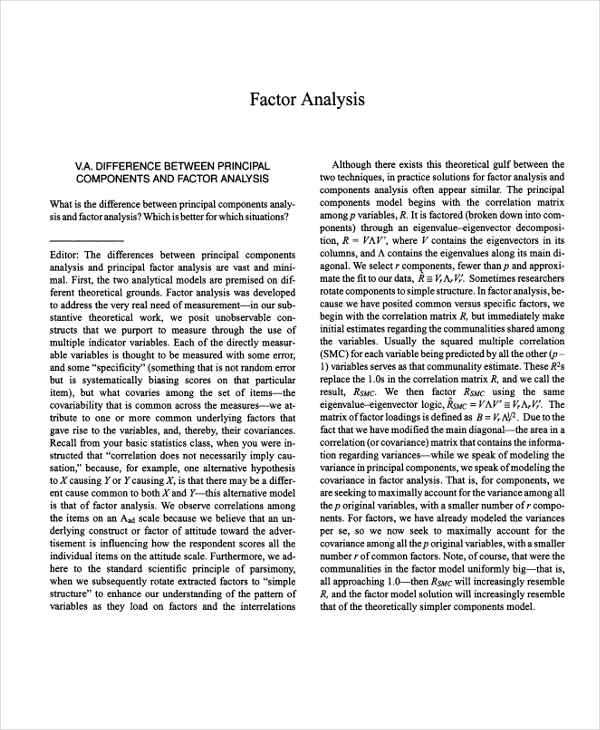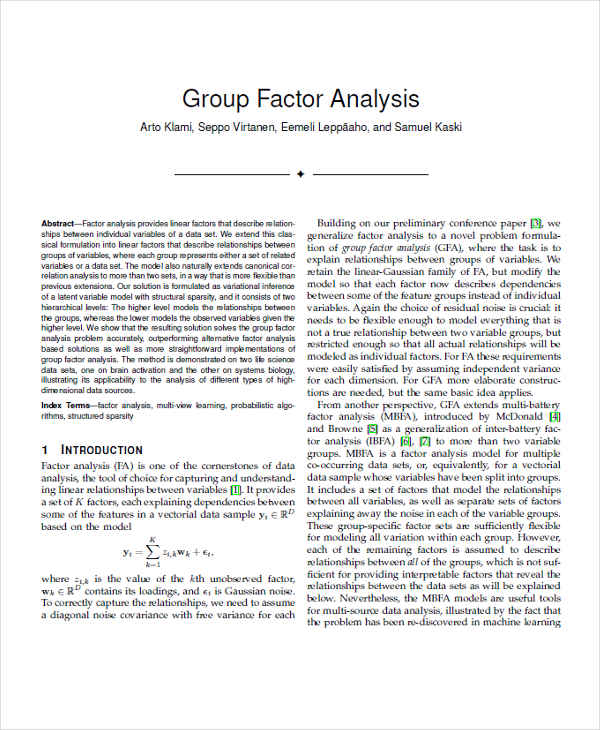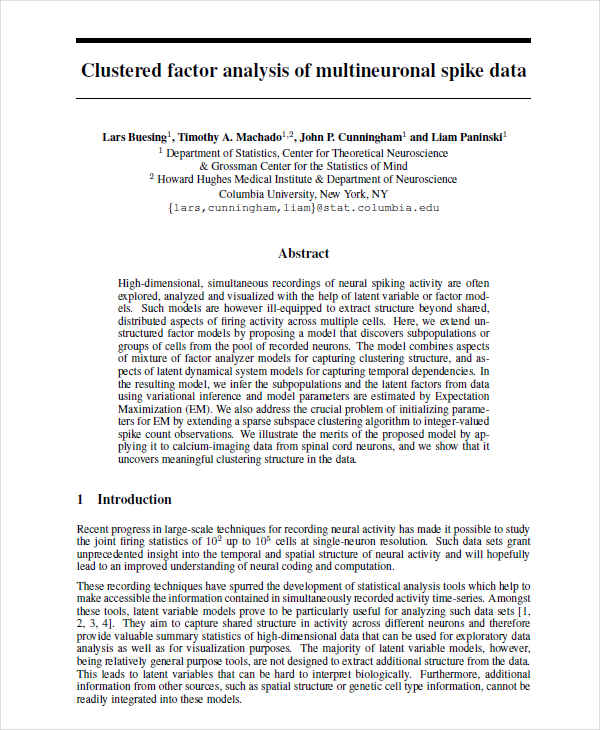9+ Factor Analysis Examples to Download
Interpreting or understanding data involving large numbers of groups would prove to be painstaking if not at all agonising without the use of factor analysis example. Customer demographics and buying behavior are often subject to such analysis in determining latent behaviours that involve such topics.
An example of usage of a factor analysis is the profitability ratio analysis which can be found in one of the examples of a simple analysis found in one of the pages of this site. Such analysis would show the company’s capacity for making a profit, and the profit induced after all costs related to the business have been deducted from what is earned which is needed in making the break even analysis for the business.
Factor Analysis Template
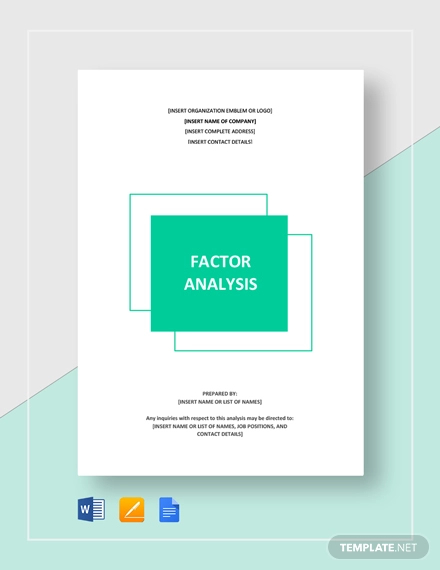
Confirmatory Factor
Exploratory Factor
Risk Factor Analysis
Marketing Factor
What is Factor Analysis?
Factor analysis uses the association of a latent variable or factor to multiple observed variables having a similar pattern of responses to the latent variable.
The first person to use this in the field of psychology was Charles Spearman, who implied that school children performance on a large number of subjects was linearly related to a common factor that defined general intelligence.
The educational analysis example in Excel found in the page is an example of an assessment using factor analysis.
How does Factor Analysis Work?
Factor analysis works by investigating multiple variable relationships for concepts such as socio-economic status and collapsing them to a few explainable fundamental factors. Simply put, factor analysis condenses a large number of variables into a smaller set of latent factors or summarizing a large amount of data into a smaller group.
The example simple analysis in the page shows how factor analysis works and the different data to be considered to make assumptions or interpretations of a given data sample.
SWOT analysis examples, found in another page within this site, also uses factor analysis in correlating the strengths and weaknesses of an employee or individual and the present threats or opportunities in an organization and evaluates them for the goal of structured planning such as developing work plans, strategic plans, action or risk plans.
Education Analysis
Group Factor
Clustering Factor
Multivariate Factor
Simple Analysis
Guidelines for Factor Analysis
Decide the number of factors to use based on proportion of variance described by factors, subject knowledge, and logic of the solution.
Evaluate your solution using different rotation methods. Rotation methods help in narrowing down factor loading patterns and correlating these factors. The sample exploratory factor analysis shown on this page explains this in more detail. You can access the PDF file by clicking on the download button below the example.
Importance of Factor Analysis
The use of factor analysis in social sciences, market research, and other industries showcase how factor analysis has greatly helped the industry or organization in coming up or understanding better the market they are in, the customers to their business analysis, and the surrounding conditions that contribute to the overall aspect of their business or concern.
Factor analysis serves as basis and is generally:
- used to determine product attributes and perception in marketing and market research.
- used to identify a lot of essential dormant factors that other statistical tools may not emphasize.
- helps focus or target the business market better.
- results to higher sales.
Results of factor analysis of target markets help decision makers in finalizing their strategic plans or business proposals by reviewing factor analysis results, financial statement assessments, and other risk assessments.




